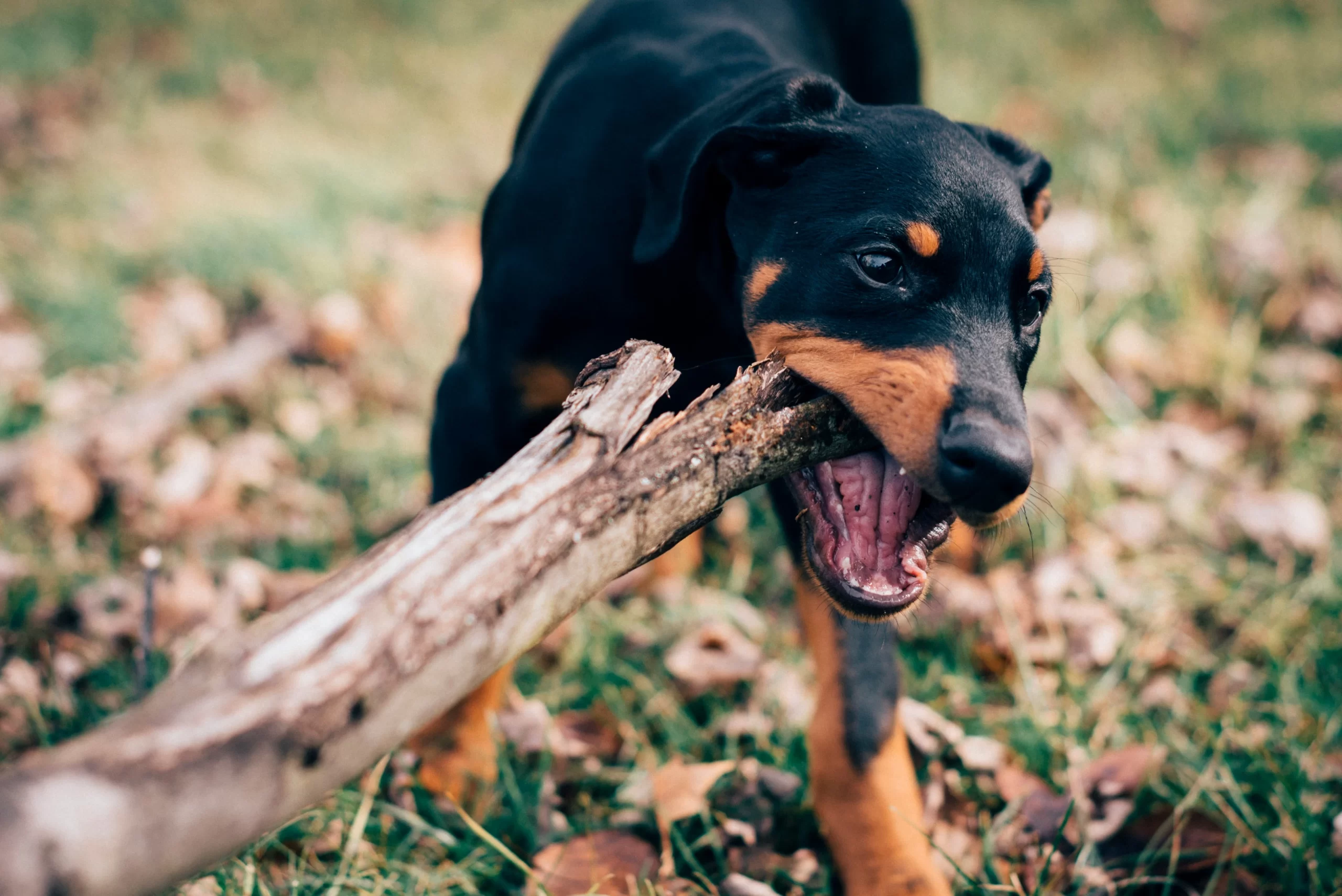Table of Contents
If you are an avid animal lover, there’s a good chance you have a special place in your heart for dogs. Among the various canine breeds, the Doberman stands out as a majestic and intelligent companion. In this article, we delve into the fascinating world of Dobermans, an extraordinary breed with a storied history, distinctive characteristics, and a significant impact on both working roles and family dynamics.

Understanding the Doberman Breed
Origins and History
The Doberman Pinscher’s story begins in 19th-century Germany, a tale woven by the hands of Louis Dobermann, a tax collector with a unique vision. Seeking a loyal and protective companion during his rounds, Dobermann set out to create a breed that embodied strength, intelligence, and unwavering loyalty.
Louis Dobermann’s breeding efforts were diverse, involving several dog breeds to achieve the desired traits. The mix included the Rottweiler, Greyhound, Weimaraner, and the German Pinscher. The result was the birth of a new breed, initially known as the Thuringian Pinscher, named after the region where the breeding program took place.
As the breed developed, it became clear that these dogs possessed remarkable qualities suitable for various tasks. Karl Friedrich Louis Dobermann’s creation was eventually recognized as the Doberman Pinscher in honor of its founder.
Physical Characteristics
The Doberman’s physical appearance is a testament to the careful selection and breeding efforts. These dogs exhibit a sleek and muscular build, emphasizing agility and strength. Their coat, often short and dense, comes in various colors, with the most common being black and tan, red, and blue.
The distinctive markings, known as “pencil markings” on the face, chest, legs, and tail, contribute to the Doberman’s regal and alert expression. The cropped ears and docked tails, while historically functional, have become points of controversy in contemporary discussions on the breed.
Intelligence and Trainability
Beyond their physical attributes, Dobermans are celebrated for their exceptional intelligence. This cognitive prowess, coupled with a strong desire to please, makes them highly trainable. Their versatility is showcased in various working roles, from police work to search and rescue missions. Their ability to grasp complex commands and solve problems sets them apart as not just companions but as highly skilled working dogs.

Doberman Care and Controversies
Lifespan
The average lifespan of a Doberman ranges from 10 to 13 years. However, the key to ensuring a longer, healthier life lies in proper care, nutrition, and regular veterinary check-ups. Responsible ownership and a nurturing environment contribute significantly to a Doberman’s overall well-being.
Shedding Myths
Shedding is a common concern among potential Doberman owners. While it’s true that all dogs shed to some extent, Dobermans, with their short coat, minimize the impact. Regular grooming, including brushing and occasional baths, can help manage shedding and keep their coat in top condition.
Ear Cropping
The practice of ear cropping in Dobermans has deep historical roots. Originally done to enhance their alert appearance and reduce injury risks during work, ear cropping has become a controversial topic. Modern discussions center around the ethical considerations of cosmetic procedures for dogs.
While some owners opt for ear cropping for traditional reasons, others argue against it, emphasizing the importance of allowing dogs to retain their natural appearance.

Dobermans in Society
Aggression and Temperament
Addressing the misconception about Dobermans being aggressive, it’s crucial to understand that temperament is shaped by various factors, including upbringing and training. Proper socialization from an early age and positive reinforcement are essential in fostering a well-mannered and balanced Doberman.
Dobermans are known for their loyalty and protective instincts, making them excellent family companions when raised in a loving and structured environment.
Family Dynamics
“Are Dobermans good family dogs?” Absolutely. With the right training, socialization, and love, Dobermans can be wonderful family companions. Their affectionate nature and loyalty make them a valuable addition to the family unit. They often form strong bonds with their human pack and can be especially gentle with children.
Safety Concerns
Regarding the question of whether Dobermans are dangerous, it’s crucial to recognize that a dog’s behavior is influenced by numerous factors, including training and upbringing. Responsible ownership, positive reinforcement, and consistent training play pivotal roles in fostering a safe and harmonious relationship between Dobermans and their human companions.

Exploring More About Animal Kingdom
For those eager to learn more about the animal kingdom, our other categories offer a wealth of information:
- Dogs
- Birds
- Cats
- 10 Amazing Dogs That Broke World Records
- 18 Amazing Cat Facts You Didn’t Know Before
- Shoebills: These Birds Hunt Crocodiles
- 7 Bird Species for First-Time Bird Owners
- The Secret Lives of Elephants
- Dodo Birds: Exploring the Lost Icon
Check these informative posts for a better understanding of animals:
F. A. Q. about Doberman Pinschers
How long do Dobermans live?
Dobermans typically have a lifespan of 10 to 13 years, but attentive care, proper nutrition, and regular veterinary check-ups contribute to a longer, healthier life.
Do Doberman Pinschers shed?
Yes, Dobermans, like all dogs, shed to some extent. Regular grooming practices, including brushing and bathing, help manage shedding and keep their coat healthy.
Why cut Doberman ears?
Ear cropping has historical roots aimed at enhancing their alert appearance and reducing injury risks during work. However, it’s a controversial practice, and opinions on the matter vary.
Are Dobermans aggressive?
Dobermans are not inherently aggressive. Proper socialization and training play a crucial role in shaping their temperament, and they can be gentle and affectionate family members.
Are Dobermans good family dogs?
Yes, with the right training and socialization, Dobermans make excellent family dogs. Their affectionate nature and loyalty contribute to strong bonds with their human pack.
Are Dobermans dangerous?
A Doberman’s behavior is influenced by upbringing and training. Responsible ownership, early socialization, and consistent training contribute to a well-mannered and safe Doberman.
Where are Doberman Pinschers from?
Dobermans originated in Germany in the late 19th century, created by a tax collector named Louis Dobermann.


